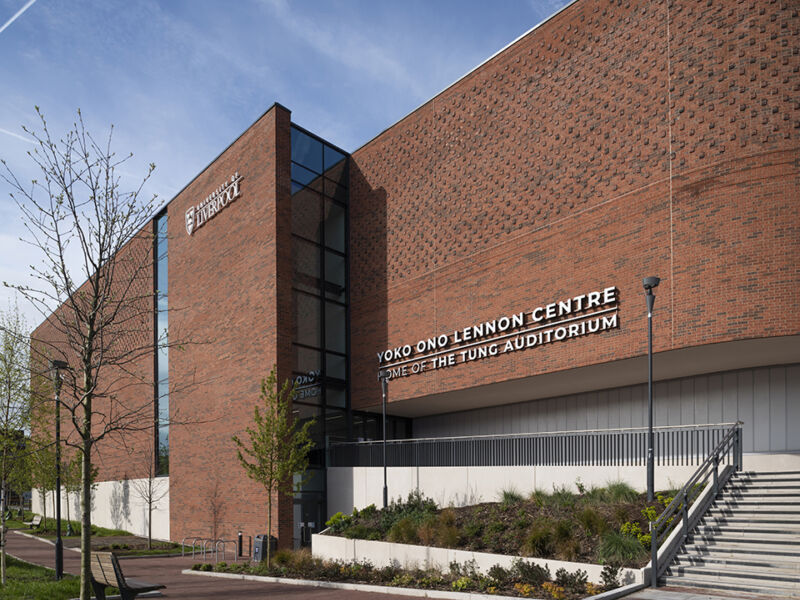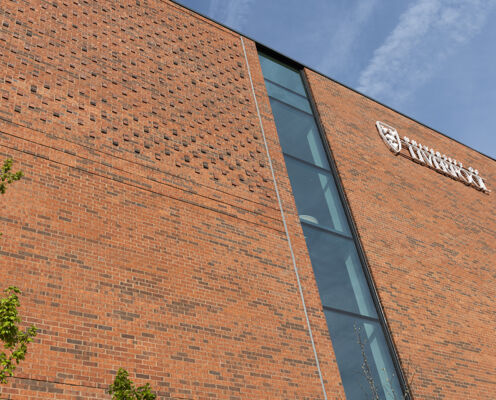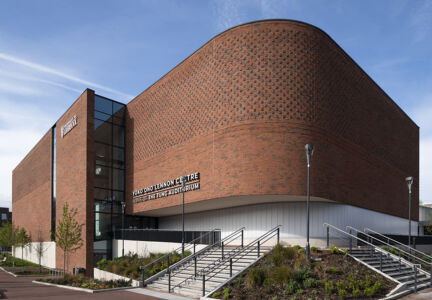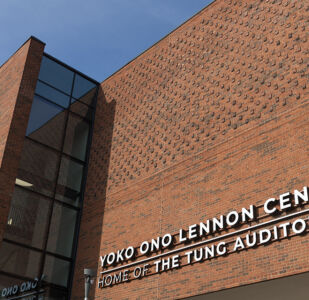
Yoko Ono Lennon Centre is a unique teaching and performance building at the University of Liverpool. It has been designed by Liverpool School of Architecture graduates based at UK architecture practice Ellis Williams.The new facility includes The Tung Auditorium – a world class music performance space – together with two large lecture theatres, seminar rooms, café space, a public facing linear park and a new outdoor space for the University.
With a floor area totalling around 6500m2 the building was planned around a careful understanding of the site and an innovative response to a challenging brief (and budget).
The lecture theatres were arranged vertically, which allowed for a much smaller building footprint – freeing up the site to deliver a linear public park alongside the main arterial route adjacent to the south elevation (Grove St). This also allowed for large volume and height of Tung Auditorium to be placed adjacent to the teaching spaces, separated by the main atrium circulation space.
Externally, the building’s form and materials relate to the robust architecture of some of Liverpool’s historic civic buildings and dockside architecture. It also responds to the immediate context of the Sydney Jones Library – in particular the use of a concrete plinth (which in itself is a reference to dock walls as practical and simple way to manage a busy edge).
The University of Liverpool was the original “red brick University” so the use of that material may seem obvious. The facing brick selected was Forterra’s Butterley Farmstead Antique.The bricks here are more than decorative however, they are a key part of the acoustic strategy and were selected for their density as well the colour and tone.
The large inward looking spaces of the theatres by definition are without external windows and openings, which can lead to a lack of activation and interest – which are equally important on a gateway site such as this. The curved forms to the corners are used to both soften the impact of the mass (accentuated by the use of double stacked protruding bricks to catch the sun), and as a nod to the curves used in prominent corner buildings that can be seen across Liverpool.





